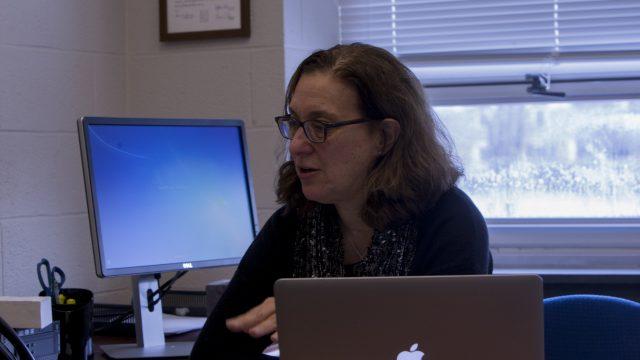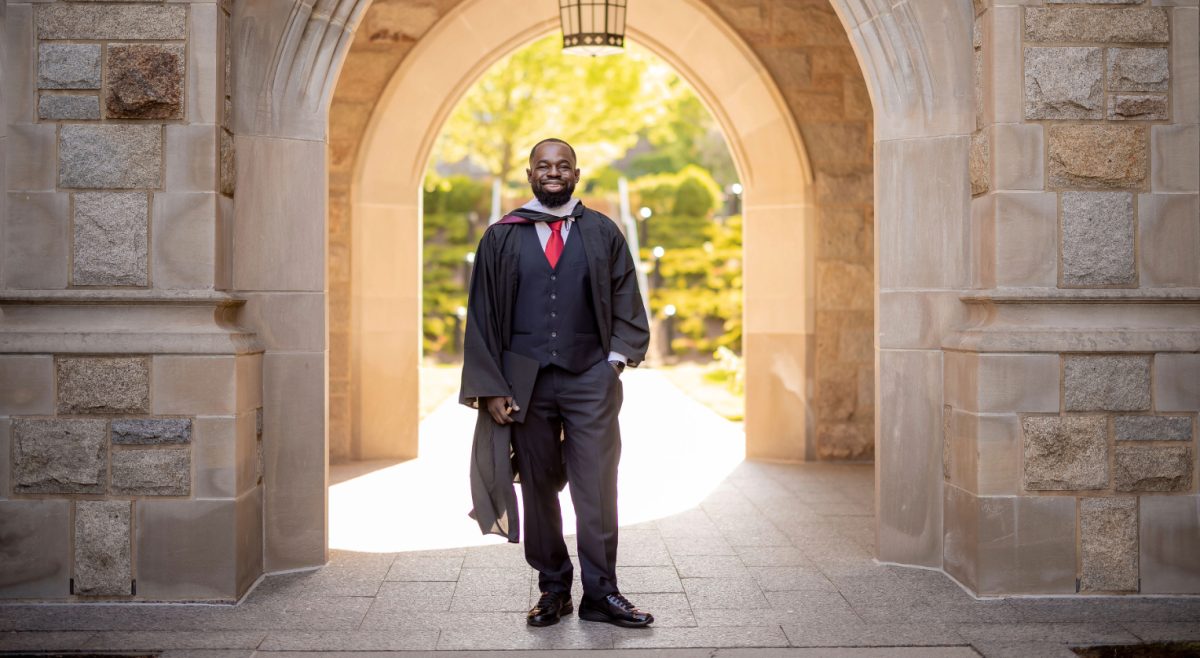The United States Judicial System is grounded in the principle of presumed innocence—that a person accused of a crime is innocent until proven guilty. To establish guilt, prosecutors must demonstrate beyond a reasonable doubt that a defendant violated the law and committed the crime. Yet, every year in the U.S., an estimated 10,000 innocent people are wrongfully convicted of crimes. Many of them spend their lives behind bars.
Since the discovery of DNA, however, exonerations of wrongfully convicted citizens are on the rise. In 1989, the first DNA exoneration took place in Illinois, where a court overturned Gary Dotson’s conviction for rape and aggravated kidnapping. DNA tests performed on biological evidence contained in the original rape kit excluded him as the perpetrator. Yet, by the time Dotson was exonerated, he had already spent 10 years of his life in prison.
Founded in 1992 by Peter Neufeld and Barry Scheck, the Innocence Project works to free the unjustly incarcerated. Since its inception, the Innocence Project has grown into a network of over 68 organizations dedicated to providing legal and investigative services to those seeking exoneration.
At Boston College Law School, Sharon Beckman directs the BC Innocence Program (BCIP) in addition to her 22-year career as a law professor at the University. Inspired by the work of the New England Innocence Project (NEIP), Beckman founded BC’s program in the hopes of fighting injustice.
“The innocence movement is the most important criminal justice movement of our generation,” Beckman said. “If there’s one thing the system can’t tolerate, its wrongful conviction.”
BCIP began as a small, independent study clinic, and grew into a comprehensive program that includes externships with the NEIP and the Massachusetts Public Defender’s Office Committee for Public Counsel Services. All law students involved with BCIP take a Wrongful Convictions Seminar, in which students study erroneous convictions from a multidisciplinary perspective, preparing them for hands-on work with convicted prisoners.
BCIP tends to take on cases in which DNA alone cannot prove innocence. Thus, all cases begin with a search for evidence that demonstrates factual innocence. Once factual innocence is apparent, students work to gather evidence. Students review legal records and court documents, looking for the “risk factors” most often associated with wrongful conviction.
The most prevalent factor in wrongful convictions is eyewitness misidentification. When she was 22 years old, Jennifer Thompson was raped at knifepoint. During the attack, she fought valiantly and studied every detail of her rapist’s face, determined to bring him to justice. Eventually, Thompson escaped.
Several days later, Thompson went to the police station and picked Ronald Cotton’s photo out of a lineup. Later, she picked Cotton out of a physical lineup, and identified him as her assailant at his 1985 trial. Cotton was convicted.
In prison, while watching the O.J. Simpson trial on television, Cotton heard about a new type of scientific evidence that could prove innocence. He asked to have his DNA tested.
The DNA results proved Cotton was innocent.
“Still, Jennifer Thompson was telling the truth,” Beckman said. “She wholeheartedly believed Ronald Cotton was her rapist.”
Cases like Cotton’s are not uncommon. In fact, for 71 percent of exonerated prisoners, witness misidentification played a role in their conviction.
Another leading factor in wrongful conviction cases is confirmation bias, or the tendency of investigators or prosecutors to interpret new evidence as confirmation of an existing theory.
“At times, people truly believe they have the right person, so they don’t see the evidence pointing toward someone else,” Beckman said. “They have tunnel vision.”
“Junk science” is a recurring factor in wrongful convictions, as it was in the conviction of Victor Rosario. Rosario was accused of starting the 1982 Lowell fire that killed eight people, including five children. He spent over three decades in prison.
During Rosario’s original trial, arson investigators who provided an expert testimony claimed they could tell from marks within the building that the blaze was ignited by multiple Molotov cocktails. Modern-day experts, however, explained that there is no way a person could know Molotov cocktails started the fire—the blaze could have been ignited by a variety of fire hazards.
In 2016, BCIP, NEIP, and the Innocence Project, Inc., filed an amicus brief urging Massachusetts’ highest court to affirm the Middlesex Superior Court order vacating Rosario’s conviction. The amici presented scientific evidence that contradicted the arson investigators’ initial claims. Moreover, the same arson investigators who presented the evidence prepared a “confession” for Rosario to sign using interrogation techniques now known to produce false confessions.
“The investigators’ claims were far from expert testimony,” Beckman said.
The other most common cause of wrongful conviction is “bad lawyering.” Many of the wrongfully convicted were represented either by incompetent and unprofessional lawyers, or by overworked and under-resourced public defenders. Without proper legal defense, the accused are less likely to be acquitted—even if they are innocent.
After gathering evidence and establishing grounds for an appeal, law students visit clients in prison to discuss case logistics.
“For the law students working in our clinic, one of the most eye-opening and educational moments is when they go to the prison for the first time,” Beckman said.
Eva Rasho, BC Law ’18, has experienced the challenges of gathering evidence, filing briefs, and visiting clients in prison as a member of BCIP’s clinic.
“It’s easy to get frustrated with how slowly the cases are moving, but it’s even more frustrating to see how slowly things move in prison,” Rasho said.
The first time she and her case partner went to visit their client in prison, they were refused entry, despite following the protocol of the prison. Rasho and her partner spent four hours working with the prison in an attempt to meet with their client. Rasho felt discouraged, but often thinks of the resilience of her clients to remind herself how important the work is.
“When our students leave the prison after their first visit, and the doors close behind them, they realize this is what it means to have freedom,” Beckman said.
Charlotte Whitmore, the supervising attorney of BCIP and an adjunct professor at BC Law, has seen what freedom means to the innocent who suffered in prison for years. Whitmore began working with the Innocence Project in Pennsylvania and spent hundreds of hours working on the case of Eugene Gilyard. Gilyard was convicted of murder and was serving a life sentence in prison. In collaboration with Innocence Project investigators and law student volunteers, Whitmore established Gilyard’s innocence and identified the true perpetrators of the crime.
Within three weeks of his release, Gilyard got a job, and has since been promoted several times. He is happily married and has three children.
“Eugene is a devout Muslim, and his faith helped him have a positive attitude and remain hopeful in prison,” Whitmore said. “He’s a remarkable success story.”
Many exonerees, however, struggle to reintegrate into society after their release. When he was 16, Jeff Deskovic falsely confessed to raping a woman. Deskovic was exonerated after 16 years in prison, after postconviction DNA testing proved his innocence.
Upon his release from prison, Deskovic suffered from intense anxiety, depression, and financial stress. As time passed and Deskovic readjusted to freedom, he founded the Jeffrey Deskovic Foundation for Justice, a nonprofit focused on helping the wrongly convicted manage the financial and emotional struggles many exonerees face after release.
William Lopez, an exoneree who benefited from Deskovic’s foundation, still struggled to integrate into society after receiving help and forming close bonds with other exonerees. About a year after his release from prison, Lopez was caught shoplifting at a CVS in New York City. Lopez explained that he was confused when he took the items.
Lopez told Deskovic, however, that he shoplifted in order to be re-incarcerated on his own terms. After falling victim to a flawed justice system, Lopez was convinced he would be put in jail again. Ultimately, he did not go to jail for his shoplifting. Yet a few months after his name was cleared, Lopez died of an asthma attack—stress degraded his health after he left prison.
The Innocence Network is working to establish resources to help exonerees better integrate back into society, from mental health treatment and housing assistance to financial and job counseling. As the Innocence Network continues to grow, understandings of the judiciary system and legal processes are beginning to change.
“The notion that convictions are final is being undermined by the innocence movement,” Beckman said. “If there’s even a risk of wrongful conviction, a verdict can never be final.”







